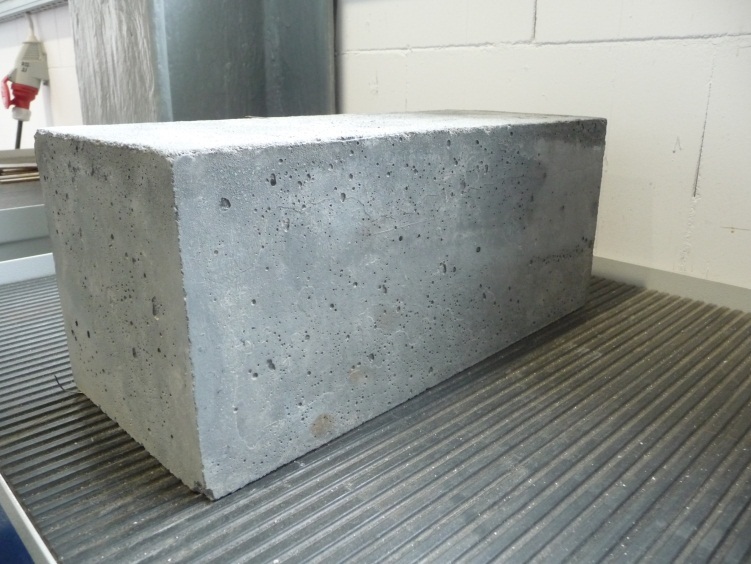Back
Present
Facts for Kids
Concrete is a strong, stone-like mix of creamy cement and bits of rock, and it matters because it builds lasting sidewalks, bridges, and walls.


Explore the internet with AstroSafe
Search safely, manage screen time, and remove ads and inappropriate content with the AstroSafe Browser.
Download
Did you know?
🌍 Concrete is the second-most-used substance in the world after water.
🏛️ Most concrete is made with Portland cement, which was invented in the early 1800s.
🛠️ Reinforced concrete contains steel rebar, which helps the concrete when it is pulled or stretched.
♻️ In Indonesia, researchers tested concrete that used crushed used diapers so old materials could be reused.
🧪 Admixtures like plasticizers are small extra ingredients that can make concrete easier to pour or make it harden faster or slower.
💎 Tiny bits such as diamonds or carbon nanofibers can be added to concrete to make it stronger and give it special electrical properties.
Show Less

Become a Creator with DIY.org
A safe online space featuring over 5,000 challenges to create, explore and learn in.
Learn more
History
People have used concrete-like mixtures for thousands of years. Long ago, some palaces and roads used early mortars and floors that behave like concrete. The Romans learned to add a special volcanic ash so their concrete could even set underwater; that helped them build big arches and the Pantheon dome that still stands today. In the 1700s and 1800s, builders improved the recipe for modern use. In 1824 a new kind of cement was made that set more reliably, and later inventors added steel to make the material stronger in bending. How do you think people mixed heavy materials before machines?
Read Less
Introduction
Concrete is a strong, stone-like material people make by mixing a creamy paste with bits of rock. The creamy part is called cement paste and comes from powder and water. The bits of rock are aggregates, usually sand and small stones. When you stir and pour the mix, it flows like batter, and then it slowly becomes hard like a rock. Builders often add steel bars inside to make reinforced concrete so it bends less. Concrete is used for sidewalks, walls, bridges, and floors because it can be shaped and lasts a long time. Have you ever watched a sidewalk being poured?
Read Less
Cement and Curing
Cement is the fine powder that makes the paste which sticks the rocks together. Makers heat crushed limestone with clay until bits melt and then grind the bits into a powder called cement. When you add water the powder goes through a chemical change called hydration or curing; the mix turns from paste into a hard, stone-like material. The amount of water matters: less water makes stronger concrete but it is harder to work with, and more water makes it easier to pour but weaker when dry. The paste fills gaps and locks the sand and stones together as it cures.
Read Less
Production and Mixing
Concrete mixes can be simple recipes or carefully designed by engineers. A design mix is planned for a special job so the concrete has the right strength and workability. Mixers often first blend cement and water into a smooth paste, then add sand and stones so everything coats evenly. One important number is the water-to-cement ratio, called w/c, and it is the amount of water compared to the amount of cement; a common range is about \(0.30\) to \(0.45\) by mass, meaning 0.30–0.45 kg of water for each 1 kg of cement. Ready-mix trucks bring fresh concrete to the site so workers can pour it before it hardens.
Read Less
Aggregates and Admixtures
Aggregates are the sand, gravel, or crushed stone that fill most of a concrete mix. They make concrete cheaper and stronger in compression because rock is strong. Builders choose different sizes so pieces fit tightly and need less paste. Sometimes old concrete is crushed and reused as recycled aggregate. Admixtures are small amounts of liquids or powders added to change how concrete behaves. Some speed up curing, some slow it down, some make the mix flow better, and others add tiny bubbles to help when water freezes and thaws. Pigments can tint concrete for color. Which additive would you choose to make a fast-setting sidewalk?
Read Less
Properties, Energy, and Uses
Concrete is used everywhere: homes, bridges, dams, sidewalks, and even parks. Making cement, the key ingredient, uses a lot of heat and causes about one part in twelve of the world’s carbon dioxide emissions, so people try to save energy and recycle materials. Concrete’s heavy mass stores heat during the day and releases it at night, which can help keep buildings comfy. Sometimes concrete is mixed with asphalt for roads; other times it is cast into blocks or panels. Engineers also use insulated forms to build warm, strong walls. What could you build if you had a small block of cast concrete?
Read Less
Try your luck with the Q22657 Quiz.
Try this Q22657 quiz and see how many you score!
Q1
Question 1 of 5
Next
Explore More